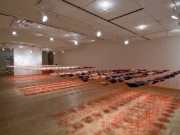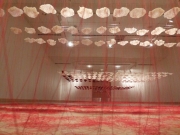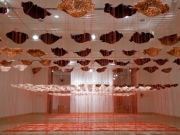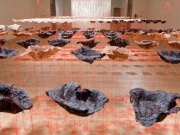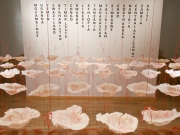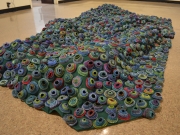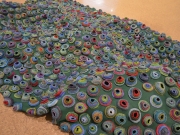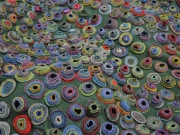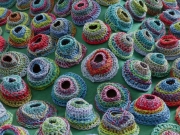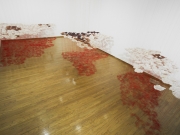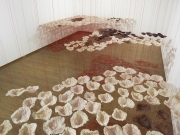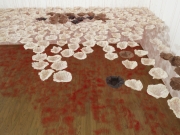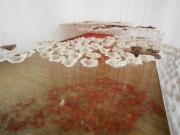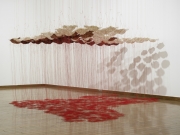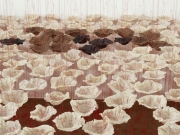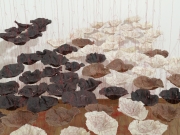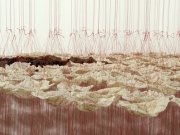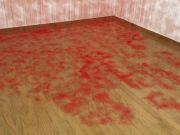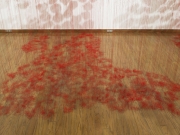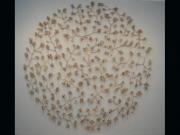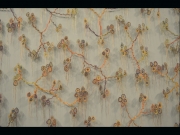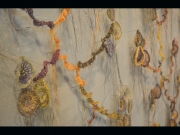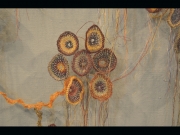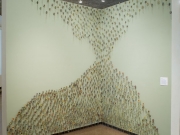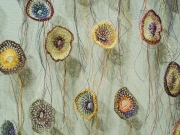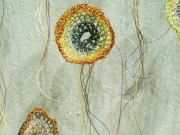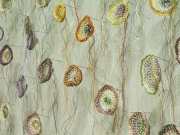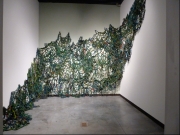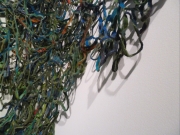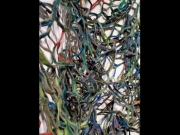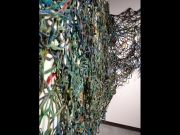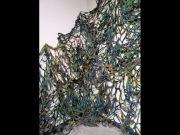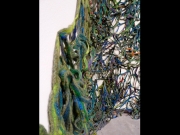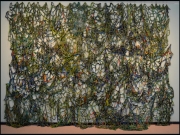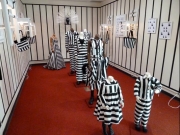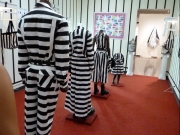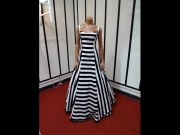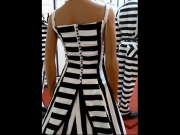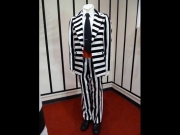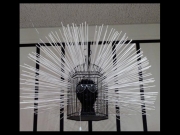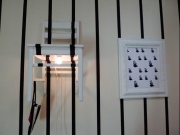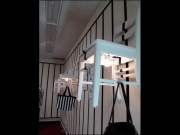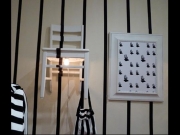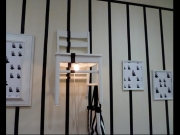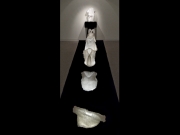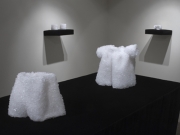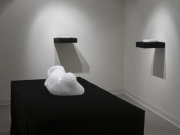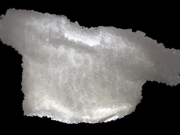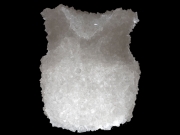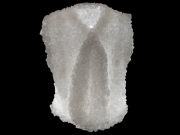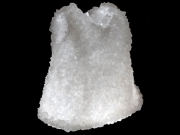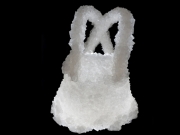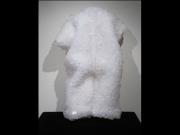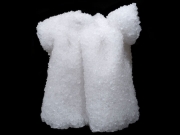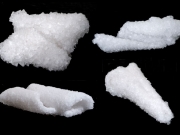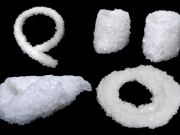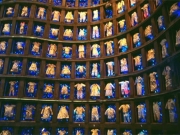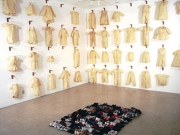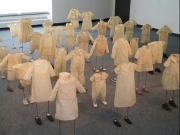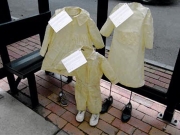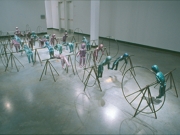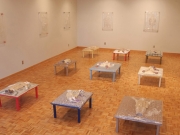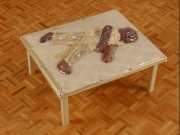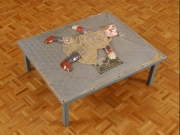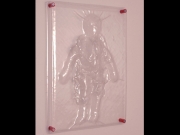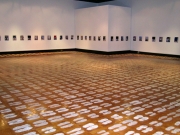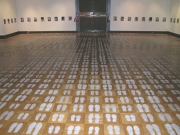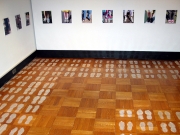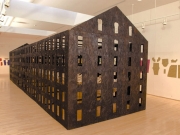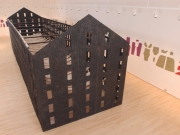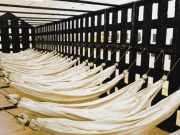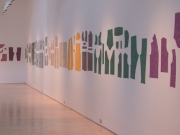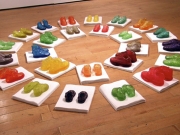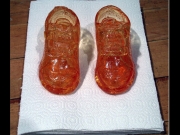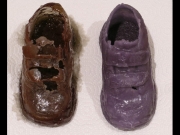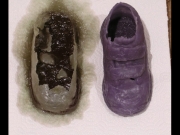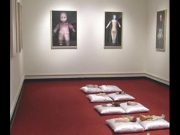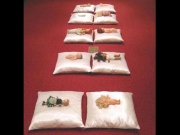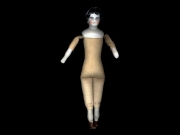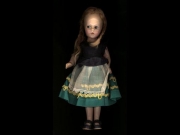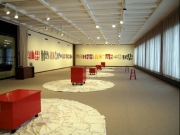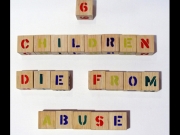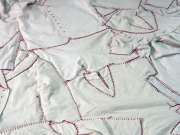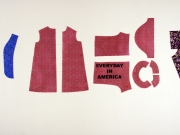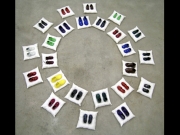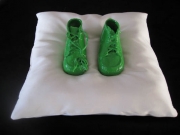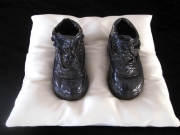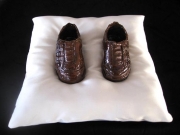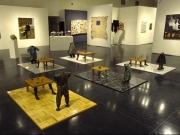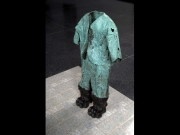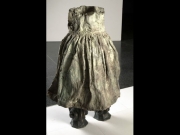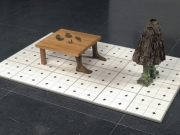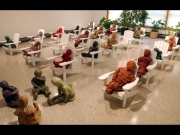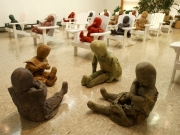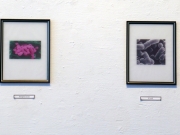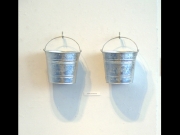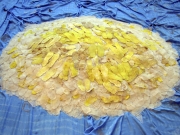This installation is a meditation on hunger. There are 925 million people worldwide that are hungry, mostly in Asia and the Pacific, Sub-Saharan Africa, Latin America, and the Caribbean. Rice has always been their staple. These facts are at the very center of Mary Giehl’s installation, Rice is Life. This installation is not simply about hunger and people in distant lands, but also about roots and connectivity between people and places. The chaos of lines brings to mind global maps with airline routs, road maps, and water lines. This installation is a graft for the worst countries int he world that have hungry. The list of the countries in located in the far end of the gallery.
Category: Installations
Tribulation
Rice is Life
This installation is a meditation on hunger. There are 925 million people worldwide that are hungry, mostly in Asia and the Pacific, Sub-Saharan Africa, Latin America, and the Caribbean. Rice has always been their staple. These facts are at the very center of Mary Giehl’s installation, Rice is Life.
This installation is not simply about hunger and people in distant lands, but also about roots and connectivity between people and places. The chaos of lines brings to mind global maps with airline routs, road maps, and water lines. The map of the world brings order back to the chaos for Giehl, who has hung the bowls according to the geography of greatest hunger, where rice is the crucial food that sustains life.
To hang the individual bowls, Giehl imbedded red threads like a vascular system into her rice bowls, underscoring the very concept that brings life and rice together. Suspending each bowl speaks to the fragility of nutrition and health in those places that rely upon rice as the primary food source, a fragility that resonates even more strongly in the thinness of the vessels themselves. The installation also requires visitors to be careful not to disturb the bowls and threads a further reminder of the fragility and delicate balance of rice and hunger in the international community.
Hunger is not just about distant lands and peoples. This installation drives home the realization that hunger exists, even thrives, around us. The Everson Museum, for example, is in one of the ten poorest census tracts in North America, hunger and need are all around us. This installation, using art to build conscience and advocate for change both locally and globally, illustrates that art can be part of our solutions.
When Rice is Life is taken down on July 27 from 12:00 to 5:00 pm, the public is invited to participate. The bowls will be given to those that would like them in exchange for a donation to the Everson Museum or the Food Bank of Central New York.
Under a Microscope
2013 Under a Microscope is an installation that was inspired by looking at micro-organisms. There are over 1000 crochet pieces. Each one is just 1.5in-2in round. Each has multiple colors of thread. The forms was inspired by an image of Rhizidium a type of algae. It was installed at the Tyler Art Gallery in Oswego, NY
They Keep on Growing
2013 They Keep on Growing is an installation that was inspired by looking at micro-organisms. I began crocheting a few with 2-3 stands of thread, as a made a few it became apparent that I need more, so I crochet over 1000 of them. Each on is just 1.5in-2in round. Each has multi colors of thread. Then I needed to figure out a way to install them. Since they started looking like jelly I research schools of fish to create the installation. The question of me is, are they jelly fish or are they the micro-organisms. When I start a project I let it develop as the material, shape and forms declare itself. This was installed at the Schweinfurth Art Center in Auburn, NY.
A Functioning System
2012 A Functioning System is based on a series of smaller pieces that have been inspired by looking at micro-organisms that have contaminated drinking water universally, especially in third world countries. The material is crochet wool yarn which then is needled felted with dyed fleece and then wet felted. There are 50 individual webs to this piece. Gallery is 14′ H x 12′ L x 16′, shown at the DCCA in Wilmington DE.
Project Alex
2012 What do people associate with Auburn, NY? In search of inspiration to create a work that would speak about Auburn’s history, first time collaborators Mary Giehl and Robert Loring visited the Cayuga Museum of History & Art and Swaby’s, a local bar that proudly displays Auburn’s “electric chair.” They also found out that Auburn prison was the first to introduce black and white stripping on inmates’ clothing and was the first prison to use an electric chair for execution in 1890. Further discussion had us talking about fashion and how we today are prisoners of the fashion industry. Project Alex then came together with the idea of high fashion using black and white stripped fabric and with playful accessories, using the electric chair as the starting point.
The installation is at the Schweinfurth Art Center in Auburn, NY
Crystal
Inner Light of Children
Foose Doll
Remembering
One Step for Our Children
Life & Death in the Age of Innocence
Sweet
Discarded
The Unbroken Circle
2007-Five red wooden boxes sitting on 12ft. circles made of 60 children outfits of canvas stitched together. 22 patterns on the walls treated with shellac and put up with 2500 brads, with silk screened words “Everyday in America” and “Yesterday, Today and Tomorrow in America.” Inside the boxes are alphabet blocks. Each box has a different statistic about children: 6 children die from abuse, 100,000 children are homeless, 8 children die from guns, 219 children die before their first birthday, 1534 babies are born to teenage girls. The audience is encouraged to take off their shoes, walk on the clothing and open the boxes.
Candy
Displaying Our Children
Adirondack Children
All About Water
2005-105 yards of silk shibori dyed with 15 silk screened images of bacteria on the fabric, draped on the floor, with a pile of 4000 children shoe prints cast with Golden Paint Matte Gel, pallets used as walk ways into the gallery. Two buckets hung. The installation is about the 4000 children that die each day worldwide from contaminated water, the two buckets represent the amount of water per day a child would need to prevent illness.


